Silent Hill f is survival horror at its most gorgeous and grotesque
Rhianne Ward
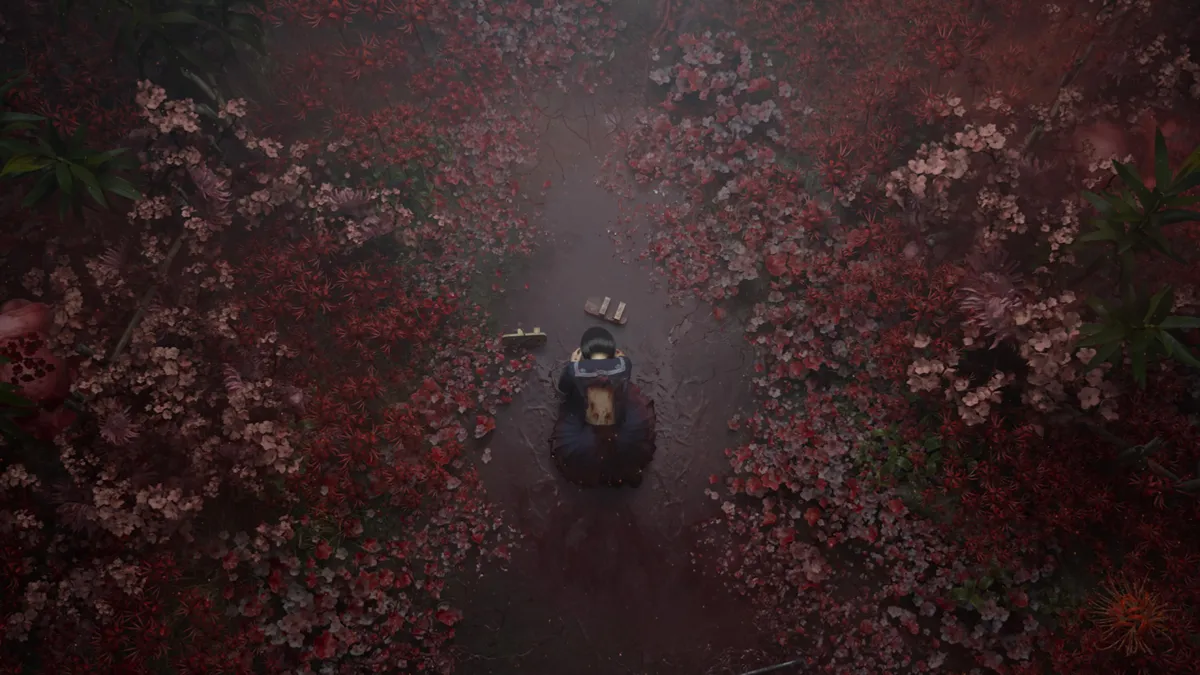
There is a rot in the town of Ebisugaoka. You may not see it, but under every stairwell, between every crack, in every dark corner, it resides. I would warn you that this rot threatens to swallow the town whole, but that would imply a world once devoid of it, and that would be deceitful of me. The rot was always there, and Shimizu Hinako can see it. No longer can she avert her gaze from the endless cycle of abusive fathers and complacent mothers, of absent siblings and resentful. She understands this town for what it is: a world designed with her out of mind. Either she can get with the program and submit, or rage against the inevitable. Either way, Ebisugaoka always wins.
Silent Hill f plays within the horror of hopelessness. It's a feeling I think we, citizens of an increasingly inequitable and unjust world, are all quite familiar with. In Hinako's case, it involves the societal expectations of women in 1960s Japan. She, as a girl soon coming of age, is expected to participate in an arranged marriage, organised by her family and the prospective groom's. However, she remains reluctant throughout the course of the story. She continued to be mortified by the possibility of a life spent placating an abusive monster like her father, and becoming just like her mother, whom she views as weak and complicit in that abuse. Her sister Junko, one of the few people in her life that she trusts, is no longer around, having fallen victim to this same enforced arrangement. Hinako is often compared unfavourably to her sister, who her family view as a picturesque example of womanhood.
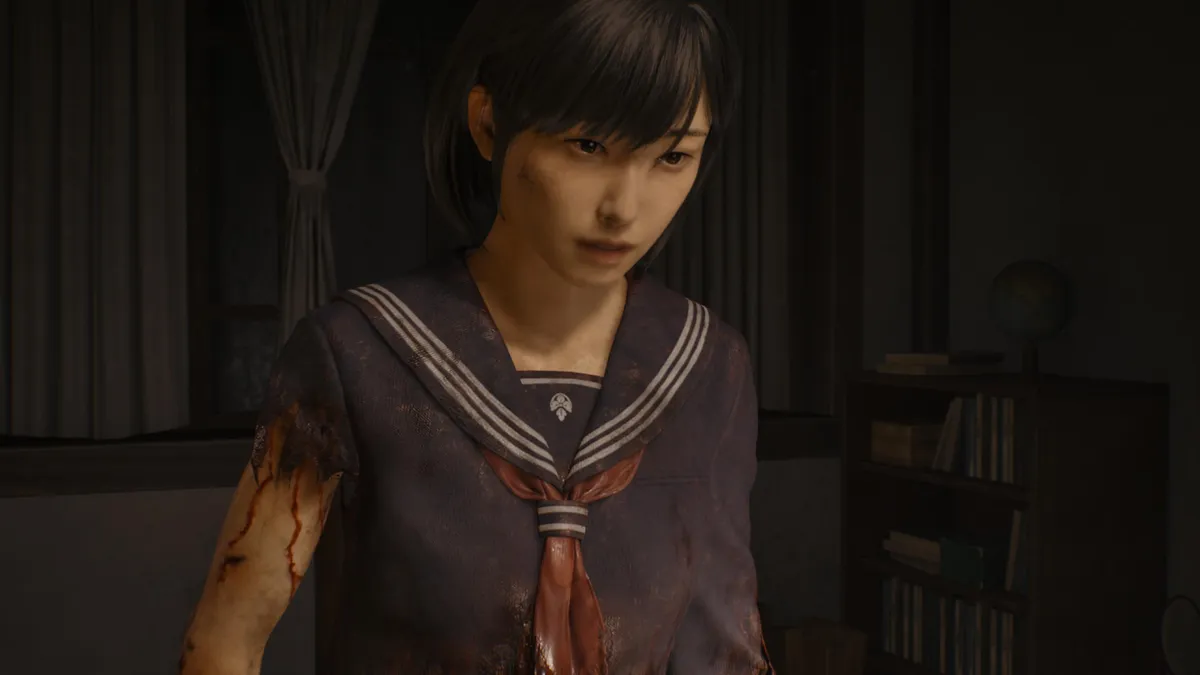
Part of Hinako's issue is that she doesn't fit the traditional characteristics of femininity. As a young child, she preferred to tustle in the mud with boys against playing house with girls. She and her best friend, Shu, maintain a long-running game called Space Wars, a science fiction fantasy world they develop over more than a decade, incorporating other friends in and out of the canon. Very cool, I think, but if you ask Hinako's parents, quite unbecoming of a lady. Even people she considers friends appear to think so, one of them noting that Hinako talks and acts "like a boy" when around Shu. Maybe she should try acting like a helpless girl in need of the strong, protecting hand of a man to guide her.
This doesn't interest Hinako in the slightest, which is quite a relief when monsters descend upon the quiet rural town of Ebisugaoka. Hinako very quickly becomes accustomed to the swing of a variety of possible weapons. She has quite a few tools at her disposal, for the player to consider. Of course, there's a health bar to maintain, and many different healing items to collect in traditional survival horror fashion. Combat in general, however, leans closer to an action setup. There's a light attack which comes out quick but delivers little damage, and a heavy attack which has a much higher likelihood of staggering but comes out very slowly. It's a risk/reward system where careful positioning and timing is generously rewarded, if you're brave enough to try it. Any player hoping to survive the horrors of Silent Hill f needs to manage their stamina output. Too many swings in a row will deplete Hinako's energy, and you'll be left standing like a deer in headlights when a monster threatens to jam a knife into your collarbone. As such, the flow of combat involves finding those crucial openings, knowing how aggressive to be, then backing off at the right time to recuperate. At a certain point, I managed to figure out which weapons worked best for each enemy type, and how many swings it would take to finish the fight. It developed a kind of reliable muscle memory by the end which was quite satisfying to unearth.
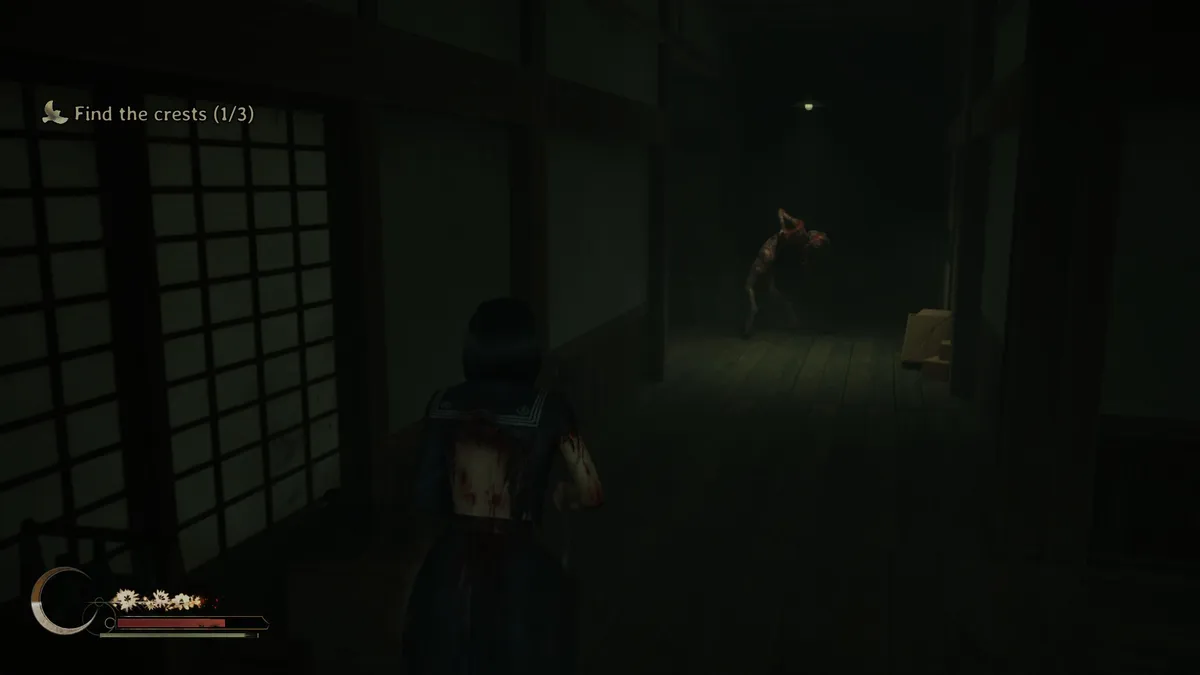
Of course, there's also a sanity bar to consider. Sanity is predominantly depleted by the use of the Focus mechanic, which allows Hinako to more easily target openings in enemy movements and launch a devastating counter attack. Holding Focus for a while also charges up a different meter which, when filled, allows for a stronger light attack. Of course, the Sanity bar, like health, doesn't recharge automatically, requiring items to recover instead, so it's to be used sparingly. Finally, there's weapon durability to consider. You find different kinds of ways to defend yourself; Hinako's staple is a steel pipe, the reliable straight sword of Silent Hill f, but you'll also come across, for example, axes, which are much slower but deal devastating damage, or knives, which are quick and deadly but deteriorate much faster. You can carry up to three at a time and while you can find toolkits to restore their condition, you'll be expected to switch out your arsenal regularly. Certain weapons are better suited to particular enemies. Quicker, darting foes are better met with speed, while more stationary damage-dealers are easier to target with the huge, slow swing of a sledgehammer. It's all about finding what feels best in the moment to you. By the game's end, I was at a point where I felt pretty comfortable in most encounters, and that came down to a gradually improving grasp of the mechanics throughout the playthrough.
Admittedly, I'm not much of an action game aficionado. I have tried and failed to get into Devil May Cry V but struggled to mesh with the combat feel, so I am willing to concede that as far as action expertise goes, I do not have that. However, that's not to say I haven't played and finished a number of action titles - I'm not exactly a stranger to the genre either - so I can say with confidence that Silent Hill f feels good to play. More than that, though, I think the messier elements of Silent Hill f's combat helps to ground the experience. I'm not going to argue that this game's version of fighting is terribly realistic - as far as I'm aware, Japanese schoolgirls aren't usually capable of dashing 10 feet across the room when they need to avoid danger - but the game does demand a certain level of intentionality to each of your inputs. Unlike James Sunderland in the Silent Hill 2 remake, Hinako won't just autolock towards the nearest enemy with every swing. Rather, you are expected to get in close and risk taking damage in every engagement. It's not gruelling, by any means. I ended up playing in Story Mode, which this game labels as the traditional Silent Hill difficulty level, and I found it to be tense and rewarding challenge overall. I'm not going to pretend Silent Hill f is revolutionising the survival horror genre with its gameplay, but I think it does everything that it needs to, especially since its priorities msotly lie elsewhere.
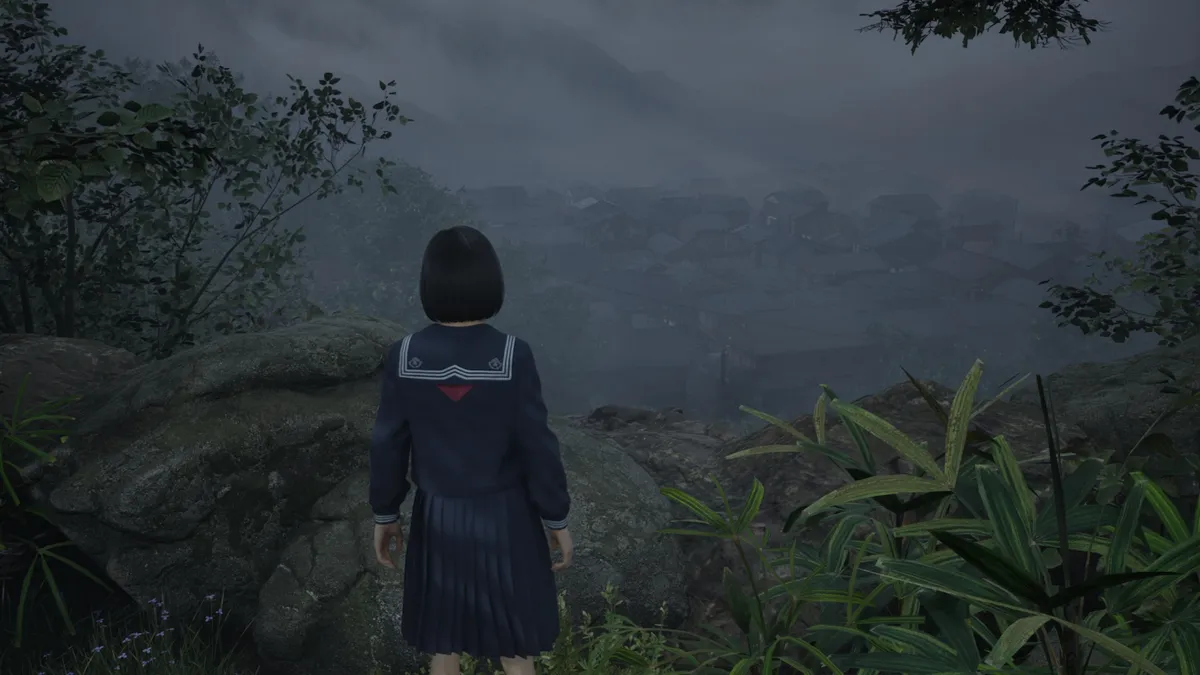
Speaking of priorities, it's clear that one of those was the presentation and evolving decay of Silent Hill f's setting, Ebisugaoka. It's a small town nestled in a mist-laden mountain valley, far away from the rest of civilisation. The perfect place to trap a group of terrified teens, I reckon! Ebisugaoka is set upon by a malicious fog which spreads fleshy growths and ominous red flowers called Higanbana - Red Spider Lilies in English, and a symbol of the spirit world in Japanese folklore - and monsters begin stalking its once-quiet streets and alleyways. Even before everything kicks into high gear, there's an uncanny silence permeating this town. Stellar sound design does much of the work; a cold breeze drifts through trees and past windows, and hushed whispers paint an unwelcome picture. Side streets are narrow and dense with detail, instilling a claustrophobia that runs throughout the game's early minutes.
Despite the pointed lack of people, Ebisugaoka feels authentic and lived-in. I sometimes catch a similar uneasy vibe walking home in the dark. Even familiar sights, if given slight adjustments, can be made off-putting. Once that patented Silent Hill fog descends upon the town and fills every space, that claustrophic feeling - that emptiness - becomes ever-present, and never lets you go. As the rot perpetuates, gusts of wind through empty streets is replaced by more visceral sensations. Squelching, suction, like flesh forming and reforming around itself... it's as if you are trapped within an open wound, preparing to seal itself around you. Not an inaccurate description of Ebisugaoka, which becomes more apparent the further in you delve, and the more layers of mystery you peel back on this strange and mysterious town.
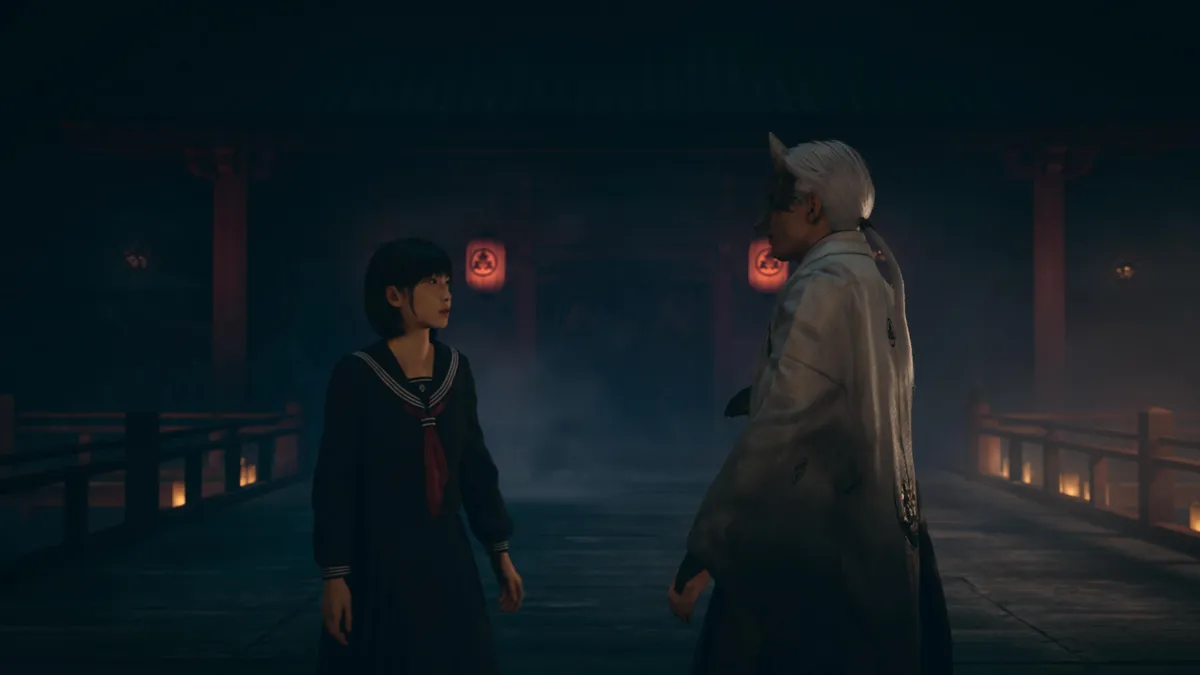
Then there's the other world, which builds a different vibe entirely. The structure of Silent Hill f is not dissimilar to games of this series' past. You'll spend half of your time negotiating the town, and the other half navigating a dream realm of sorts. It's dark and foreboding, its architechture emulating traditional Japanese shrines and temples, and its interiors grand and opulent, often dwarfing Hinako in size many times over. It sets a different tone, but maintains the same feeling of emptiness that felt inescapable. Whether in her home town or a different realm entirely, Hinako cannot help but feel utterly out of place. You follow around a man in a fox mask who seems intent on preparing you for some kind of ritual, and Hinako, while initially confused, seems eerily willing to comply.
Events in the dream realm don't seem to bleed over into Ebisugaoka, or vice versa, in obvious ways. For a long time, it's hard to tell what is even going on, but much like Ebisugaoka, the deeper you dive, the clearer the picture becomes. And so, you continue on, hoping against hope that things will start to make sense eventually. For the record, they do, but Silent Hill f is the kind of game that expects a certain amount of trust from the player that their efforts will result in a satisfying payoff. I'm here to tell you that it does, but it's a particularly slow burn, so if that's not to your taste, consider this my official warning. Personally, I love it; I find a lot of enjoyment in piecing a story together in real time, and speculating on the directions it might take. I had some wild theories early on that were late disproven by the narrative, but the game was clearly engaging enough to get my imagination racing, and that's definitely worth commending.
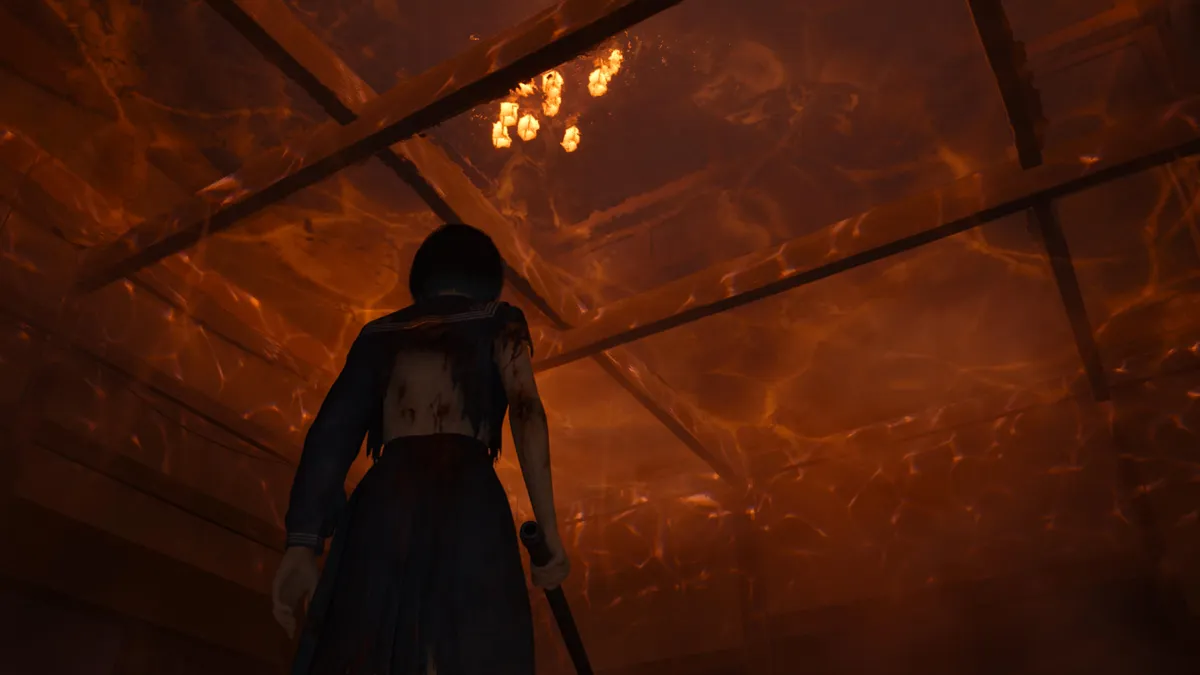
I think it's now time to talk about the elephant in the room. If you're familiar with any of the discourse surrounding this game, and you're reading this hoping to get a sense of whether or not it's worth your time, then a question must be answered: does Silent Hill f require multiple playthroughs to get the full story? The answer is yes, but I'd like to make an argument in favour of this approach. First of all, your initial run through this game will net you a single ending, and it is not a good one. Obviously, I won't get into spoilers here because I want desperately for you, the prospective gamer, to play this, but it's the kind of ending that leaves a lot of questions unanswered and many mysteries unsatisfied. The game then sends you back to the menu and encourages you to try New Game+, which promises changes to cutscenes and story beats, and hopes that you'll try stuff out to see if you're able to eke out a different conclusion. Personally, I just looked up how to achieve the other endings because I know myself well enough to understand that my dumb ass would have missed all the signalling in the world.
You're probably wondering if there's any real benefit to going through the whole game again, when you could just as easily search up the other endings on YouTube, and I want to advise against that. I'll frame it this way: do you ever replay a game or rewatch a movie, and in doing so, you're able to pick up on all sorts of foreshadowing it had been laying out the entire time? You start to overanalyse performances and dissect dialogue which, with the information you uncovered by that story's end, become imbued with all new meaning and presence. Suddenly, a character acting in a seemingly nonsensical way the first time around makes complete sense on the second. It's part of what makes re-experiencing any story we love fulfilling. At least, that's how I feel about it.
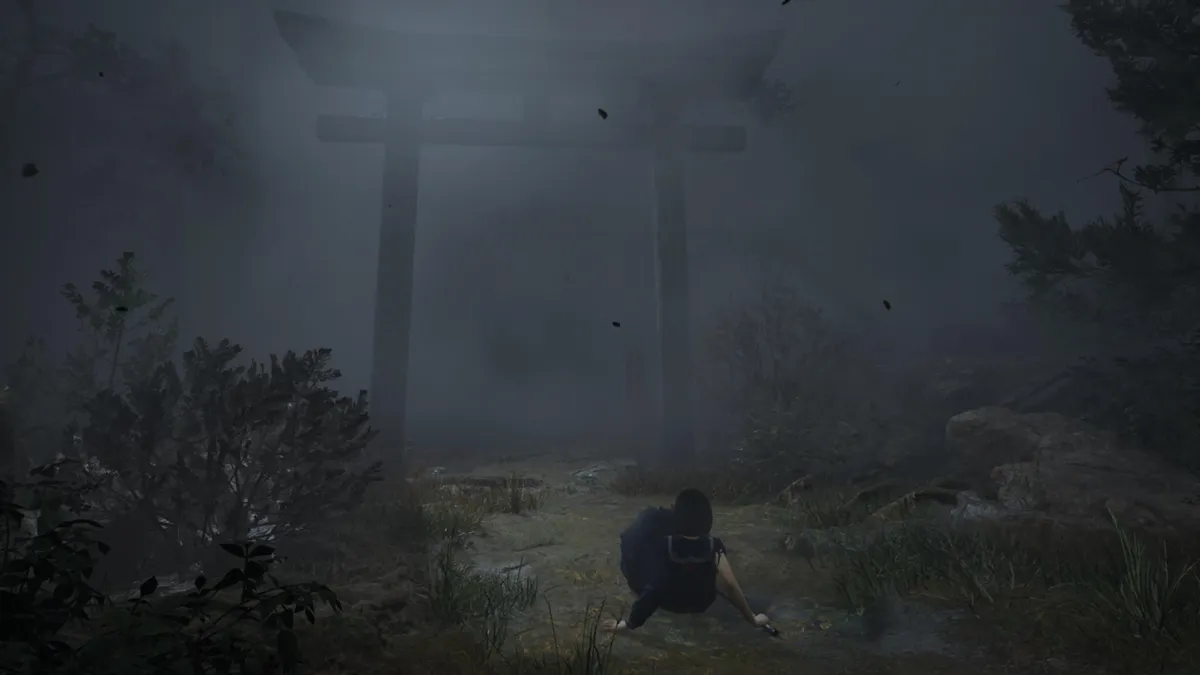
Silent Hill f is structured around this experience, and not only that, it weaponises that impulse to reframe old scenes in a new light by altering them in different, insidious ways. Sometimes those alterations are obvious, like wholly replaced lines of dialogue, changing the feel of a scene, while others are near imperceptible, and you start to question what you thought was the reality of the game you're playing entirely. It almost feels like the game is actively attempting to gaslight you, and cause you to doubt your own instincts. Or even the opposite: it changes a single detail of a scene in order to infuse it with new, terrifying meaning, and all of a sudden you're questioning how on earth you didn't see the warning signs sooner. I found my second playthrough of Silent Hill f to be more engaging than the first, as puzzle pieces started clicking place and strange new mysteries began to reveal themselves. It's not just cutscenes and dialogue either. Notes and documents can be found scattered throughout both Ebisugaoka and the dream realm, and a second run through reveals even more of them, and suddenly your understanding of what this world is and what it wants from Hinako becomes ever-clearer. Silent Hill f, by freely altering the limits of what is considered reliable and unreliable information within its story, invokes the kind of feelings Hinako experiences as a girl in this rigidly patriarchal society. It's unclear at first, but Hinako knows that there is something wrong with this town, and the more you exist within it, the more you allows herself to think about that possibility, the more visible the rot of Ebisugaoka becomes.
The Silent Hill series is often about characters trying to survive within a hell of their own making. Maybe they did something unforgivable, or simply wandered in at the wrong time, but all of a sudden, their worst fears and anxieties are made manifest. Silent Hill f runs a similar gambit; there is frequent allusions to pregnancy, dolls, wedding ceremonies and subservience... all traditional symbols of femininity. However, what it seeks is what the best Silent Hill games often do: a vivid, horrifying encapsulation of the protagonist's lived reality. Hinako may not be regularly pursued by puppeteered mannequins moving in unnatural ways, but that's not far off how she views the women of this town. She might not be victim to the forceful grabbing of slimy creatures with dripping tongues exposed, but there is surely no shortage of creepy men in her vicinity at all times. Silent Hill f is at its best when it indulges in these horrifying expressions of real fears. That's what horror does best, after all: manifest the conceptual.
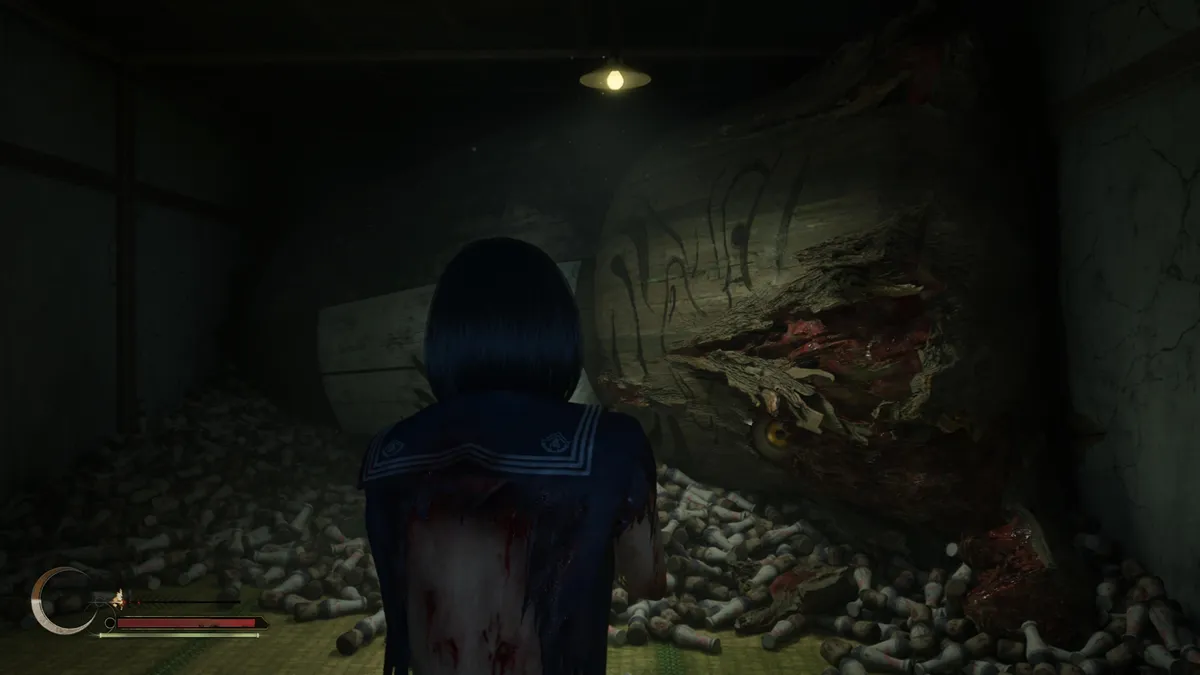
And yet, Silent Hill f cannot help but approach the subject matter with care and nuance. A first playthrough might paint the town as evil, Hinako's friends as vindictive, and her family as abusive monsters, but a second complicates that narrative to some extent. What Hinako wants more than anything is agency; the ability to make decisions for herself, and be allowed to make mistakes. Part of being able to choose your own way forward, unfortunately, is being given the freedom to see the world for what it is, and that path leads to an unfortunate truth: everybody is a victim in a world that seeks to preordained their place within it. Characters who would be despicably evil in one story were, over the course of my three playthroughs, given the necessary time and space to transform into human beings instead. Yet still, despite this, Silent Hill f is by no means excusing the people who made Hinako's life hell. Rather, it gives her, and the player, the room to decide for herself who deserves a second chance, and whose sins are simply too great to forgive. Either way, to understand the people around us and their actions is to allow ourselves the option to stay or go. Silent Hill f is certainly in conversation with the concept of growing up, and in its eyes, becoming an adult is recognising that the world often does not provide the answers we're looking for, and feeling equipped to deal with that possibility.
The world right now feels impossible. Forces well beyond our control make decisions that affect us and our ability to live truly free lives. We are all at the whim of something, be it money pressures, gendered conformity, or social expectations, and after a while, it all gets to be a bit much. What's worse is that, when we have to choose between food and clothing, when people are forced from their homes and sent overseas, when genocide unfolds abroad and our governments remain gleefully complicit, we all know something is wrong. We can all see the rot at the heart of this world. We might be here a while, longer than we'd like, so maybe it's easier to close our eyes and pretend there's nothing under the stairwells or hiding in the dark corners and tell others the same, but it won't go away. To understand what the world is shouldn't be a curse, but a blessing. At least, if nothing else, we know. That's a start.